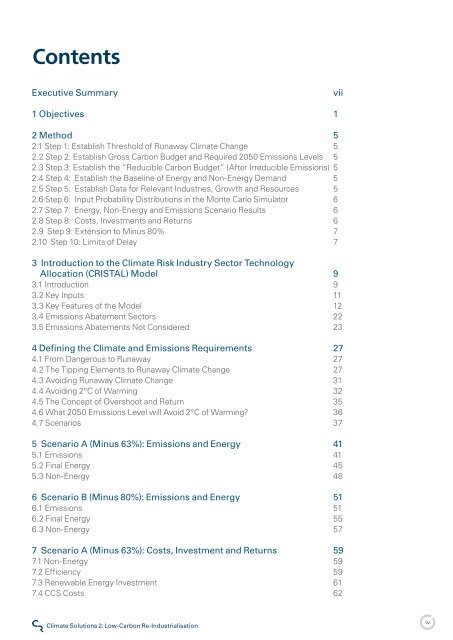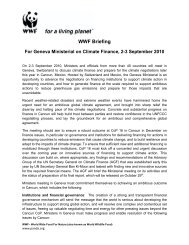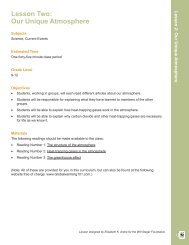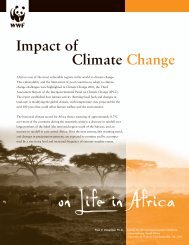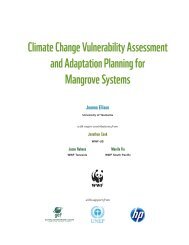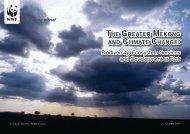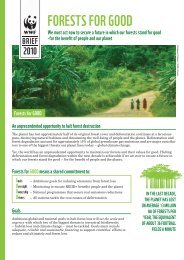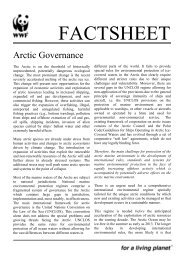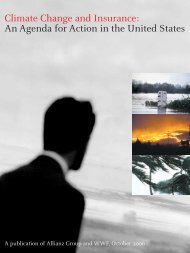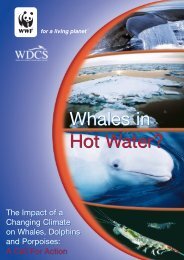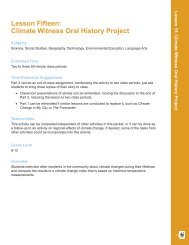Climate Solutions 2: Low-Carbon Re-Industrialisation - WWF Blogs
Climate Solutions 2: Low-Carbon Re-Industrialisation - WWF Blogs
Climate Solutions 2: Low-Carbon Re-Industrialisation - WWF Blogs
Create successful ePaper yourself
Turn your PDF publications into a flip-book with our unique Google optimized e-Paper software.
Contents<br />
Executive Summary<br />
vii<br />
1 Objectives 1<br />
2 Method 5<br />
2.1 Step 1: Establish Threshold of Runaway <strong>Climate</strong> Change 5<br />
2.2 Step 2: Establish Gross <strong>Carbon</strong> Budget and <strong>Re</strong>quired 2050 Emissions Levels 5<br />
2.3 Step 3: Establish the “<strong>Re</strong>ducible <strong>Carbon</strong> Budget” (After Irreducible Emissions) 5<br />
2.4 Step 4: Establish the Baseline of Energy and Non-Energy Demand 5<br />
2.5 Step 5: Establish Data for <strong>Re</strong>levant Industries, Growth and <strong>Re</strong>sources 5<br />
2.6 Step 6: Input Probability Distributions in the Monte Carlo Simulator 6<br />
2.7 Step 7: Energy, Non-Energy and Emissions Scenario <strong>Re</strong>sults 6<br />
2.8 Step 8: Costs, Investments and <strong>Re</strong>turns 6<br />
2.9 Step 9: Extension to Minus 80% 7<br />
2.10 Step 10: Limits of Delay 7<br />
3 Introduction to the <strong>Climate</strong> Risk Industry Sector Technology<br />
Allocation (CRISTAL) Model 9<br />
3.1 Introduction 9<br />
3.2 Key Inputs 11<br />
3.3 Key Features of the Model 12<br />
3.4 Emissions Abatement Sectors 22<br />
3.5 Emissions Abatements Not Considered 23<br />
4 Defining the <strong>Climate</strong> and Emissions <strong>Re</strong>quirements 27<br />
4.1 From Dangerous to Runaway 27<br />
4.2 The Tipping Elements to Runaway <strong>Climate</strong> Change 27<br />
4.3 Avoiding Runaway <strong>Climate</strong> Change 31<br />
4.4 Avoiding 2°C of Warming 32<br />
4.5 The Concept of Overshoot and <strong>Re</strong>turn 35<br />
4.6 What 2050 Emissions Level will Avoid 2°C of Warming? 36<br />
4.7 Scenarios 37<br />
5 Scenario A (Minus 63%): Emissions and Energy 41<br />
5.1 Emissions 41<br />
5.2 Final Energy 45<br />
5.3 Non-Energy 48<br />
6 Scenario B (Minus 80%): Emissions and Energy 51<br />
6.1 Emissions 51<br />
6.2 Final Energy 55<br />
6.3 Non-Energy 57<br />
7 Scenario A (Minus 63%): Costs, Investment and <strong>Re</strong>turns 59<br />
7.1 Non-Energy 59<br />
7.2 Efficiency 59<br />
7.3 <strong>Re</strong>newable Energy Investment 61<br />
7.4 CCS Costs 62<br />
<strong>Climate</strong> <strong>Solutions</strong> 2: <strong>Low</strong>-<strong>Carbon</strong> <strong>Re</strong>-<strong>Industrialisation</strong><br />
iv<br />
<strong>Climate</strong> Risk


